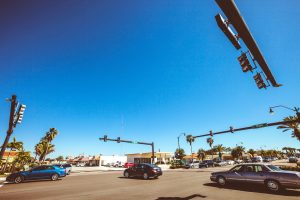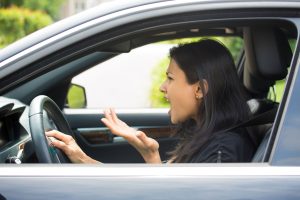Reckless drivers have caused damage and death on our roads as long as there have been motor vehicles. Although Palm Beach car accident lawyers can attest it had been getting safer in recent decades, we’re now in the midst of one of three historically huge spikes in U.S. traffic deaths. 
As detailed in a recent analysis by The New York Times, the first uptick occurred early in the 20th century, when cities were first flooded with large numbers of new, unskilled drivers. The second occurred at the midcentury mark, with the unveiling of the freeway system and powerful vehicles that could go from 0 to 60 mph in mere seconds. Nearly 51,000 traffic deaths were reported in a single year in the 1960s, rivaling the number of U.S. soldiers killed in combat during the entirety of the Vietnam War.
From 1972 to 2011, traffic deaths started declining. Vehicles got safer. The government began requiring stronger roofs and doors. Seat belt laws were passed. Airbags became standard. Medical advances were made. Crashes that would have killed people in the 1960s now only result in a broken leg. Accountability for bad driving behavior, like DUIs and later cell phone use, got more stringent. Young drivers were required not only to pass driver’s education courses, but also to complete graduated driver’s license schedules before being granted a full license.
And yet, today we’re in the midst of a third huge historical spike in traffic deaths.
Last year, there were nearly 384,00 reported Florida car crashes resulting in 3,228 deaths and more than 245,000 injuries. Florida law enforcement officers reported more than 2.6 million traffic violations, both criminal and civil. Compare that to 2011, when there were 228,000 crashes resulting in 2,400 deaths and 181,000 injuries.
Why such a marked spike in crashes and related deaths? A researcher in Nevada may have some insights.
Why Roads Are Getting Riskier
In 2000, an I.C.U. trauma surgeon and assistant professor at the University of Nevada School of Medicine began exploring traffic deaths.
Pulling information from government sources and community surveys, she identified several factors leading to higher-than-average crash death rates in the suburbs of Las Vegas. The most significant was long, flat roads conducive to high-speed travel. (As our Palm Beach car accident lawyers know, South Florida has much the same problem.) On roads with more footbridges, pedestrian deaths were lower. The presence of a single stop light made a huge difference, as it meant that stretch of street was no longer basically a drag strip.
Between 2010 and 2019, the number of traffic deaths in that suburb dropped or stayed stagnant. That was pretty much true nationally too. More features, like sensors for blind spots, backups, and lane departures, became standard.
But in 2020, the script was flipped. All of the sudden, first responders across the country were reporting surges in traffic deaths. Nevada reported a 15-year high number of traffic deaths in 2021. In 2022, there was 114% increase in bicyclist deaths. In a two-year time frame in Florida, we went from 340,000 total crashes to 401,500, according to the Florida Department of Highway Safety and Motor Vehicles. The National Highway Traffic Safety Administration (NHTSA) reported that in that same two-year span, the total number of crashes rose 16 percent (more than 6 million) and traffic deaths were the highest they’d been in 15 years.
Part of it is that vehicles today are larger than ever. Big cars, SUVs and trucks allow less visibility and cause much more damage – particularly when they come in contact with bicyclists or pedestrians. (Vehicles with a hood height of 40+ inches is 45% more likely to kill a pedestrian than a smaller car, according to the IIHS.) The average full-size S.U.V. now weighs 1,000 pounds more than a 1950s sedan. Pickup trucks today are 1,300 pounds heavier on average than they were in the 1990s.
Also, those outlier sports cars in the 1960s that went from 0-60 mph in 5 seconds? There are now dozens of midmarket cars that match or beat that time, easily.
Additionally, we have more than 4 million miles of road in this country that has been deemed in poor or mediocre condition, per the American Society of Civil Engineers. We have a construction backlog of nearly $790 billion.
But still, none of that explains the very sudden spike we started seeing around the time of the pandemic.
 The Role of Driver Frustration
The Role of Driver Frustration
The Nevada researcher dove into the data to figure out what was happening, and discovered an alarming rise in extremely careless driving behaviors: Higher speeds, red light running, not wearing seat belts, driving drunk.
Researchers’ conclusion: “Drivers were frustrated.” Many of them felt stuck. Personal conflicts became exaggerated. They were self-medicating, and their behavior on the road became incredibly reckless. But even after the frustration of the pandemic and lockdowns diminished, the reckless road behavior did not.
It has, some experts believe, become normalized. Law enforcement agencies are reporting higher than ever rates of road rage, extremely high speeds, and flagrant distractions. In one survey, 80 percent of respondents reported more shouting, rude gestures, and cursing on the roads. More than one-third reported other drivers intentionally trying to cause actual damage to other vehicles. It’s gotten so pervasive that psychologists have weighed in, noting that when we add global stressors (climate change, economic stress, international conflicts, racial injustice, etc.), we end up with one-third of Americans feeling too much anxiety about today to think about tomorrow.
As one writer put it: “We’re all baseline angry and anxious – and we’re all in a car, all the time.”
Transportation officials say part of resolving the problem needs to be investment in smart traffic engineering solutions. Things like rumble strips, protected sidewalks and bike lanes, more stop lights, more speed bumps, more roundabouts.
But we also need to start carefully considering our own driving behaviors. They tend to be contagious. Public awareness campaigns may be an important part of that, but so too is internal reflection. The potential ripple effects of all drivers resolving this year to simply giving themselves a little more time – and showing a little more grace and care for others – are profound.
If you’re injured in a West Palm Beach car accident, contact South Florida personal injury attorneys at Halberg & Fogg PLLC by calling toll-free at 1-877-425-2374. Serving West Palm Beach, Miami, Tampa, Orlando and Fort Myers/ Naples. There is no fee unless you win.
Additional Resources:
Why Are American Drivers so Deadly? Jan. 10, 2024, By Mathew Shaer, The New York Times
More Blog Entries:
West Palm Beach Car Accident Attorney Fees When Insurers Reject Fair Settlements, Nov. 7, 2023, West Palm Beach Car Accident Lawyers Blog
 South Florida Injury Lawyer Blog
South Florida Injury Lawyer Blog

